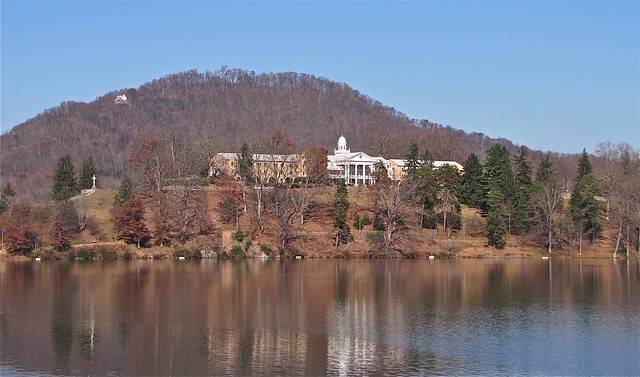
THE LAMBUTH INN AT LAKE JUNALUSKA
The weekend before Thanksgiving, Carrie and I left for vacation in North Carolina and Georiga. We returned to Normal on Monday. I did not have time to blog on vacation, but I did take a lot of pictures of birds. So over the next several days, I will be reporting my vacation adventures. This first blog will cover the days of our stay at Lake Junaluska, NC. Carrie and I stayed a couple of days at an apartment in Lake Junaluska very close to the actual lake. We have often stayed there when we have gone to visit my mother, who lives nearby in Waynesville, NC. Much of the property around the lake is owned by the United Methodist Church. Lake Junaluska is the location of their Southeast Regional Assembly. Their buildings are used year round for conferences for Methodists and other denominations and organizations. The small, but beautiful man-made lake is located in Haywood County amidst the Smoky Mountains of Western North Carolina. The 2 1/2 mile walk around the lake is a refreshing way to start a day of vacation.
Carrie and I set out at around 9:00 a.m. to enjoy a morning walk when I was amazed to see a couple of Hooded Mergansers at the edge of the lake near the Visitor's Center.
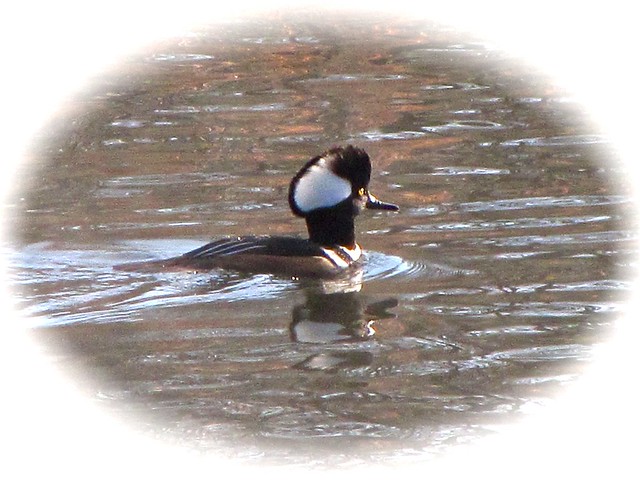
The reason I was surprised was that I have not previously seen much of a variety of waterfowl at this lake. Mostly, I have only seen Mallards, Canada Geese, and Coots, but apparently the Assembly received a grant several years ago for a Wetlands Project, and I believe their efforts have begun to attract a variety of wildlife to the lake. In the last 3-4 years, I have noticed their attempts to create a small secluded area for wildlife, including a small island strip very close to the shore, but far enough away to create a path of water between the island and the shore. This Wetlands Project area is marked by signs very near to the entrance of the Assembly. The last time I visited the lake in the Spring, I noticed a Green Heron and a pair of Mute Swans nesting on this small island strip. The Mute Swans, however, I believe to have been released there. A couple of years ago, a Black Swan, native to Australia, was among them. Swan feeding stations have been positioned next to the lake to retain the Swans. The first residents I saw in this area were a flock of Pilgrim Geese, which have remained at the lake since I first saw them.
After Carrie got a look at the male merganser, the pair noticed our presence and flew away. I was very happy to be able to show Carrie the Hooded Merganser, and she was excited to see it, but she also wanted to finish her walk, so she continued around the lake with the binoculars, while I went to investigate the Wetlands Project area with my camera to see what other Waterfowl might be hiding along the shore. As I approached the island, I flushed what was probably a night heron, but I could not see specifically what it was due to poor lighting. I admit I did not recognize my next discovery until I had an opportunity to compare my photos with my field guide. This was the first time I had ever seen Gadwalls.
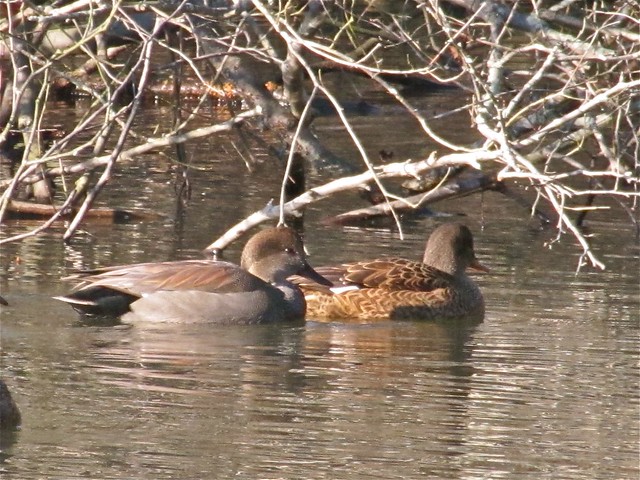

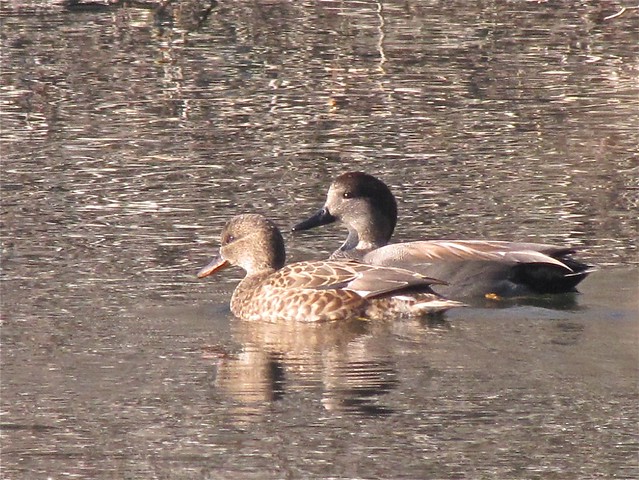
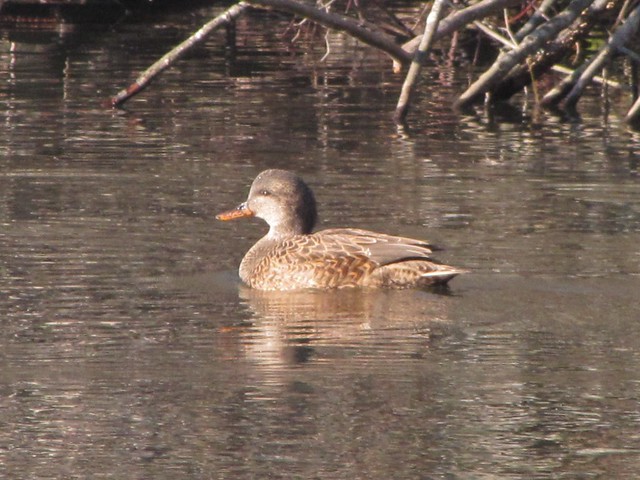
As I continued to explore, I saw what I thought to be more Hooded Mergansers, but as I began photographing them, I realized they were Buffleheads. I was confused by the black and white plumage--an easy mistake for an untrained eye. Incidentally, both species are divers and therefore seem to behave similarly as well.
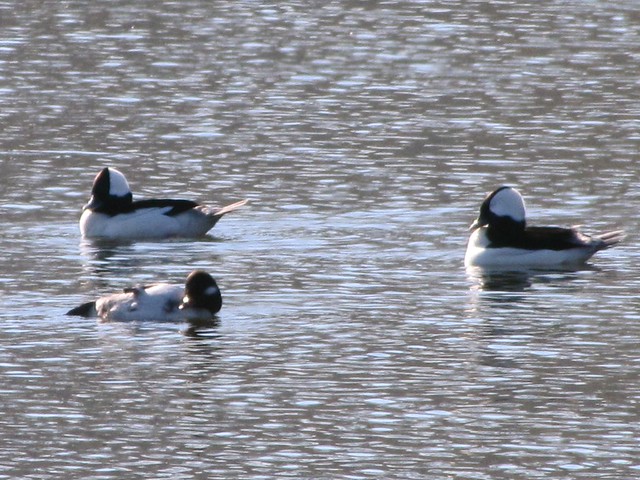
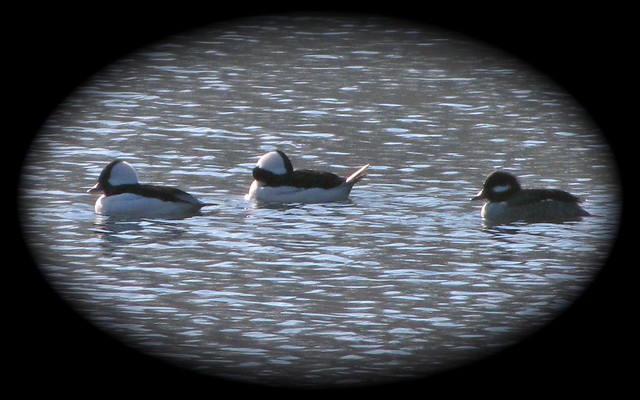
A pair of Belted Kingfishers flew noisily over the lake. Then I heard an unfamiliar but strangely inviting call to my right, which I discovered to be a female Wood Duck swimming close to the edge of the shore. I approached cautiously, yet in order to see her through the weeds, I had to reveal my presence. After I took a few shots, she swam away with a pair of Mallards. Although most would say the male Wood Duck is more beautiful, this female was quite lovely, calling gently by the shore. I thought it very appropriate to see my first female of the species also known as the Carolina Duck in North Carolina. I do wish, however, I could have seen the pair together.

By this time Carrie had finished her walk and returned to check on me. I tried to locate the Wood Duck for her but to no avail. She decided to return to the apartment, and I left the Wetlands Project area to continue walking around the lake. I saw three Muscovy Ducks. Of course these were not wholly wild, but feral. Especially the female and her chick were covered in white, while even the darker, wilder looking male was quite aggressive in approaching the people who were feeding the Domestic Mallards. This family was not at all fond of the Muscovies, but considered them "Ugly Ducks" because of the extensive red markings on their faces. I, however, was delighted to see them.



After observing some woodpeckers, I watched a pair of dazzling Eastern Bluebirds lighting over and atop their nest box. These were to be the first of many Bluebirds for the day.


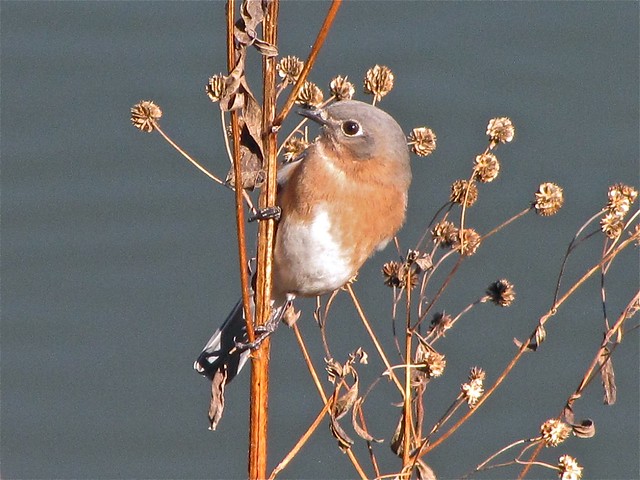
A Northern Mockingbird stood frozen on the branch of a tree. I walked around the tree to get a better view. I approached closely making kissing noises, trying to get the bird to expose his face. This technique worked well, but also brought some unexpected visitors--a Tufted Titmouse and a Carolina Chickadee. I have not seen a single Mockingbird in Illinois, but this would be the first of many I would see for the week in North Carolina and Georgia. I actually saw my first Mockingbird in North Carolina this Spring.
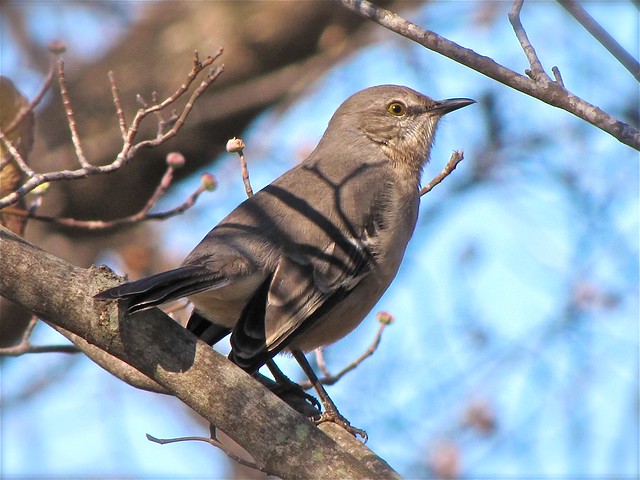

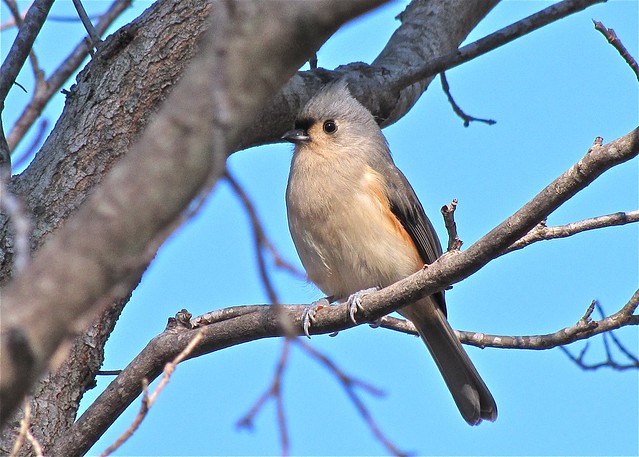
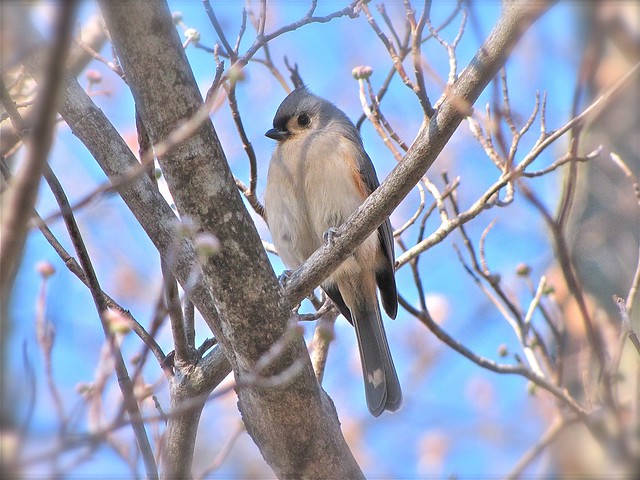
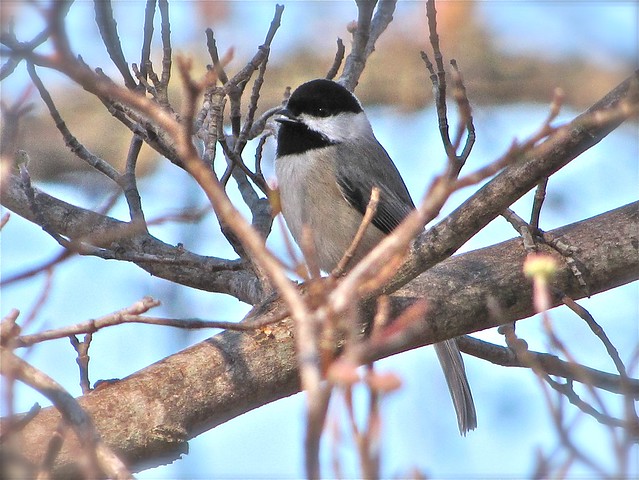
Instead of walking around the Lake after crossing the wooden bridge by the pool, I went the opposite direction toward the highway. In this part of the lake, I saw 14 Ring-necked ducks, and a pair of Mute Swans by the bank. At this time I also counted about 300 American Coots on the lake.



After I reached the end of the lake, I walked back to the other side of the bridge, where I saw more Titmice and Bluebirds. A pair of Golden-crowned Kinglets displayed the bright flames on their heads, but I could not manage a decent photograph of these fidgety little birds. An Eastern Towhee and a couple of Carolina Wrens frantically stirred up fallen leaves looking for worms or insects, and I relished the song of the Song Sparrow, which was the last bird I photographed before returning to the apartment. I never made it all the way around the lake, but it was a wonderful day--31 species!

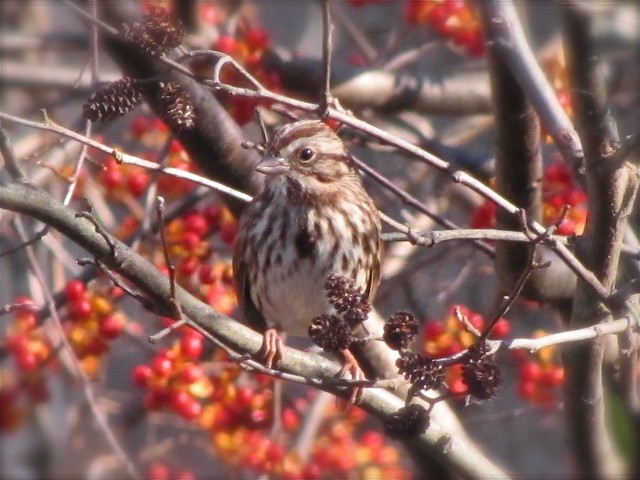
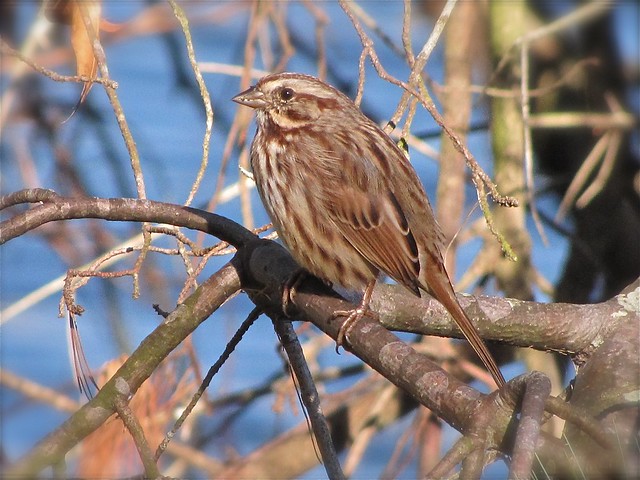
I stopped by the next morning to attempt better pictures of Hooded Mergansers and Buffleheads. I included my complete list for the weekend below.
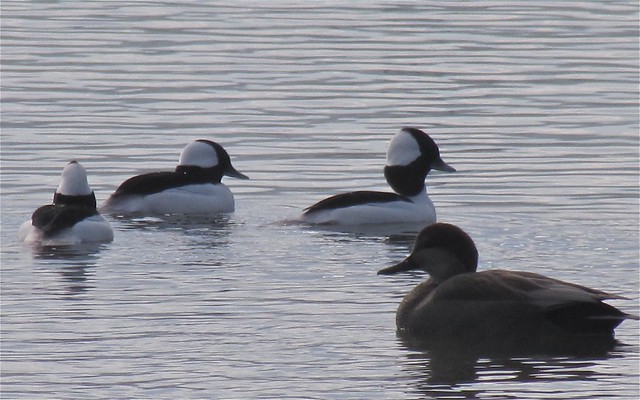

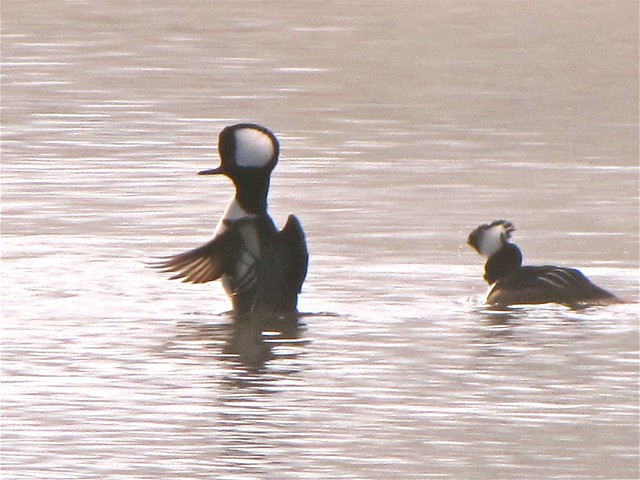
Canada Goose 30
Mute Swan 8
Muscovy Duck (Domestic type) 3
Wood Duck 1
Gadwall 8
Mallard 35
Mallard (Domestic type) 18
Ring-necked Duck 14
Bufflehead 6
Hooded Merganser 4
Pied-billed Grebe 7
Bald Eagle 1
American Coot 300
Belted Kingfisher 2
Red-bellied Woodpecker 2
Downy Woodpecker 3
Eastern Phoebe 1
Blue Jay 8
American Crow 5
Carolina Chickadee 1
Tufted Titmouse 4
White-breasted Nuthatch 1
Carolina Wren 2
Golden-crowned Kinglet 2
Ruby-crowned Kinglet 1
Eastern Bluebird 12
Northern Mockingbird 1
European Starling 18
Eastern Towhee 1
Song Sparrow 6
Dark-eyed Junco (Slate-colored) 3
Northern Cardinal 3
American Goldfinch 3
Written and published on December 1, 2010
No comments:
Post a Comment